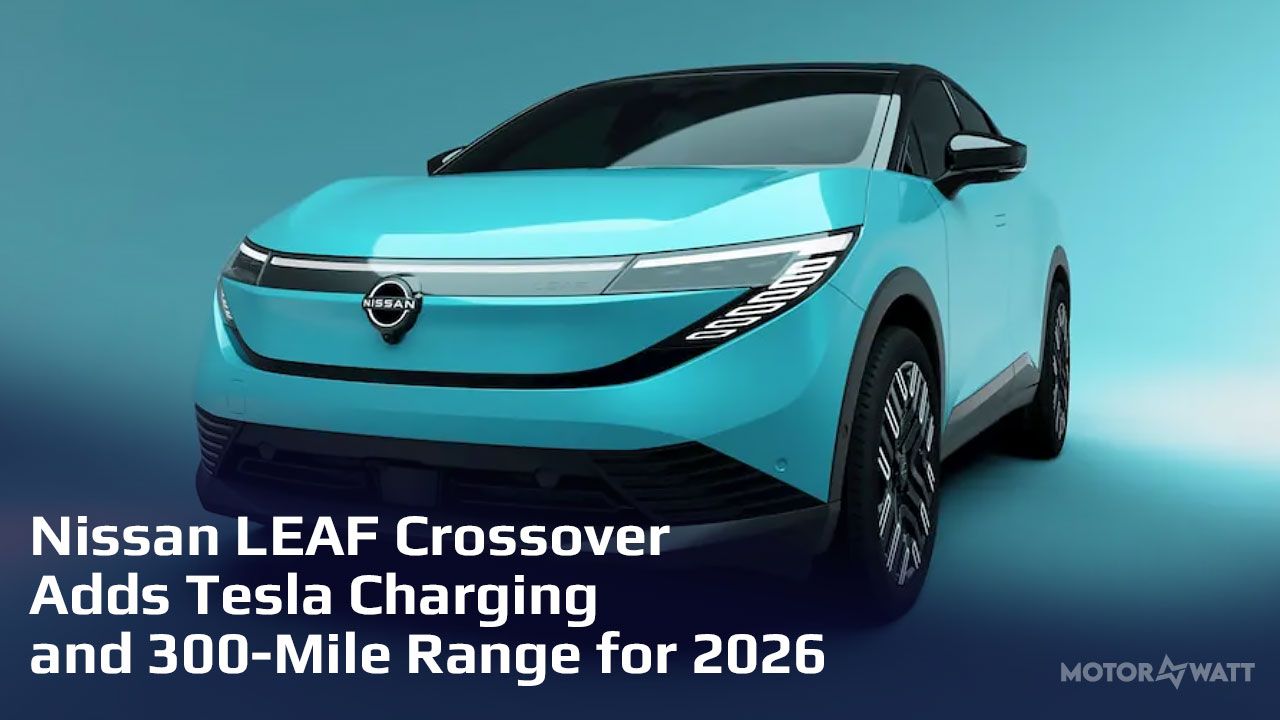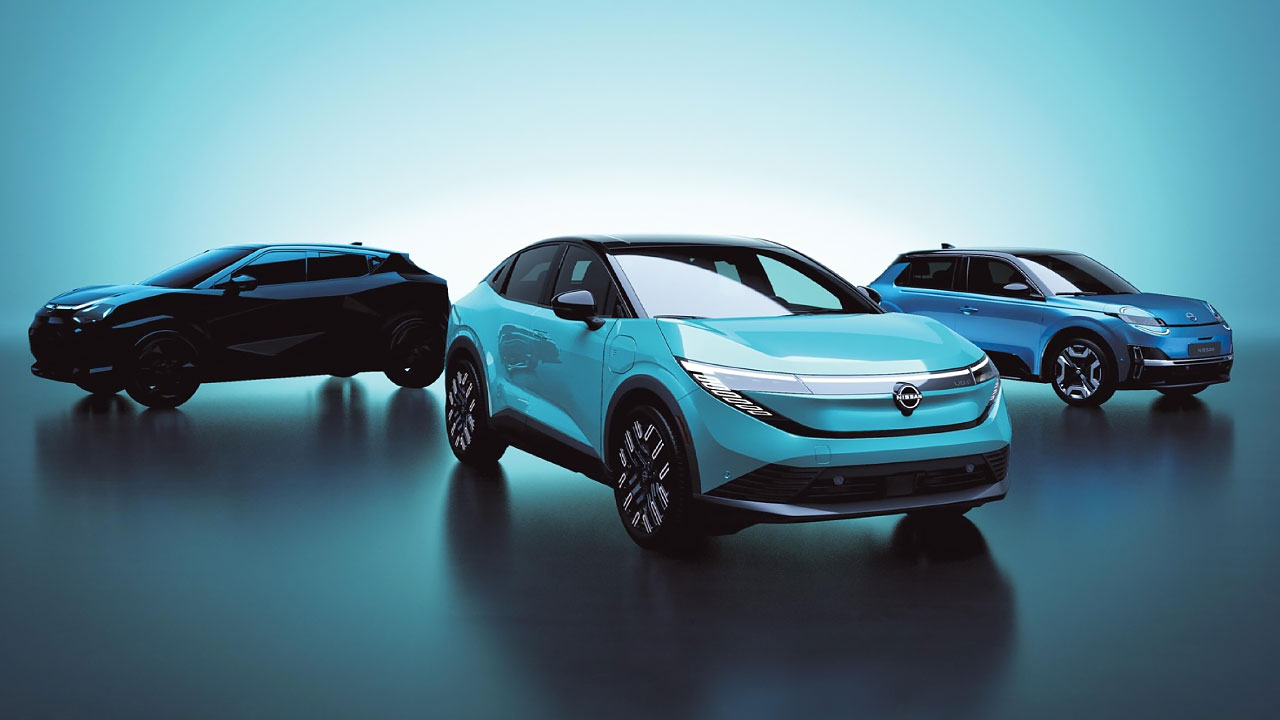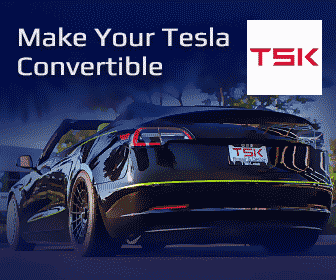Nissan LEAF Crossover Adds Tesla Charging and 300-Mile Range for 2026
Share this article in Social Media:

The 2026 Nissan LEAF crossover debuts with Tesla Supercharger access, a 300-mile range, and a sleek design built on the CMF-EV platform. Combining practicality with affordability, it marks Nissan’s bold return to the EV spotlight.
Next-Gen Nissan LEAF Crossover: A Bold Pivot with Tesla Supercharger Power
For over a decade, the Nissan LEAF has been a familiar name in the electric vehicle (EV) world—pioneering the mainstream EV movement back in 2010. But let’s face it: while the competition moved forward, the LEAF started to feel stuck in time. That’s about to change. As of April 8, 2025, Nissan officially pulled the wraps off its next-generation LEAF, and this thing’s got teeth. It’s no longer a quirky hatchback—it’s a sleek, Tesla Supercharger-compatible crossover built to take on the giants in the EV game.
Slated to hit North American roads by the end of fiscal year 2025 (March 2026), this reimagined LEAF isn’t just a facelift. It’s a ground-up reinvention designed to bring Nissan back to relevance—and maybe even steal a few buyers from Tesla and BYD in the process.
From Hatchback to Compact Crossover: Nissan Gets the Memo
Forget the jellybean silhouette. The new LEAF borrows inspiration from the Nissan Chill-Out concept, shifting to a crossover body style that better fits today’s buyer preferences. Built on the CMF-EV platform (also used in the Ariya), it rides higher, looks sharper, and finally feels like it belongs in 2026.
The design is compact yet spacious—about three-quarters the size of a Tesla Model Y—making it ideal for urban families and younger drivers. A panoramic moonroof, 19-inch alloy wheels, and a more aerodynamic body all signal that Nissan’s done playing it safe. It’s stylish, practical, and way more appealing than the LEAF’s prior utilitarian shell.

Tesla Supercharger Support: NACS Port Comes Standard
This is the headline grabber: the new LEAF comes factory-equipped with Tesla’s North American Charging Standard (NACS) port. No adapters, no half-baked solutions—just full native access to Tesla’s 20,000+ V3 Superchargers across North America. This makes the LEAF the first Nissan EV to officially ditch the aging CHAdeMO standard and join the NACS wave.
With Supercharger access, the LEAF steps into an elite club of EVs that offer truly worry-free fast charging. It’s a huge convenience boost and a critical move for long-distance usability. And with CCS networks still spotty in parts of the U.S., this could be the difference-maker for buyers sitting on the EV fence.
More Range, More Space, More Relevance
According to Nissan’s internal estimates, the upcoming LEAF could offer up to 373 miles WLTP (around 300 miles EPA). That’s a massive jump from the current model’s 212-mile cap. The extra range, combined with Supercharger access, makes this LEAF road-trip ready and finally competitive with rivals like the Model Y and Hyundai Kona Electric.
Inside, Nissan is promising a “spacious and family-friendly” cabin with improved materials and layout. Expect more ergonomic controls, digital screens with updated UI, and connectivity features geared toward a younger audience. It’s not luxury-tier, but it won’t feel like an econobox either.
Competitive Pricing: Will Nissan Undercut Tesla?
The current LEAF starts just under $30,000, and while the crossover version is expected to carry a slight price bump, Nissan appears committed to staying affordable. Industry insiders suggest the base trim could still come in under $40,000 (€37,200), well below the Tesla Model Y’s $45,000 (€41,800) starting point in the U.S.
Nissan’s secret weapon? A cost-cutting “3-in-1” powertrain that integrates the motor, inverter, and gearbox into a single compact unit—reducing production costs by up to 30%. That efficiency could allow Nissan to offer premium EV features at budget-friendly prices, giving it a serious edge in a market crowded with $50k+ crossovers.
Nissan’s Comeback Strategy: Built in the U.S., Aimed at the World
The LEAF’s transformation is part of a broader Nissan reboot. The automaker is rolling out 10 new or refreshed models for North America by fiscal 2027, with the new LEAF leading the charge. After its failed Honda merger and shaky global sales, Nissan needs a win—and this crossover might be it.
U.S. manufacturing facilities in Tennessee and Mississippi could give Nissan a tariff advantage in future EV trade wars, making it an appealing partner for foreign brands and a solid Made-in-America option for EV buyers seeking domestic credibility. That, paired with bold styling and charging practicality, positions the LEAF as more than a nostalgia play—it’s a serious contender again.
Excitement Builds, But Questions Remain
Reaction on social media has been electric. EV enthusiasts are calling the new LEAF “Nissan’s Model Y moment,” and Supercharger compatibility has drawn praise even from Tesla loyalists. Still, some skepticism lingers—will the range numbers hold up under EPA testing? Will build quality and software match competitors?
With models like the revived Chevy Bolt EUV and Kia EV3 circling the same price band, Nissan’s execution will need to be razor-sharp. But for now, the next-gen LEAF has done the hardest part—it’s got everyone talking again. And in today’s oversaturated EV space, that’s half the battle.

